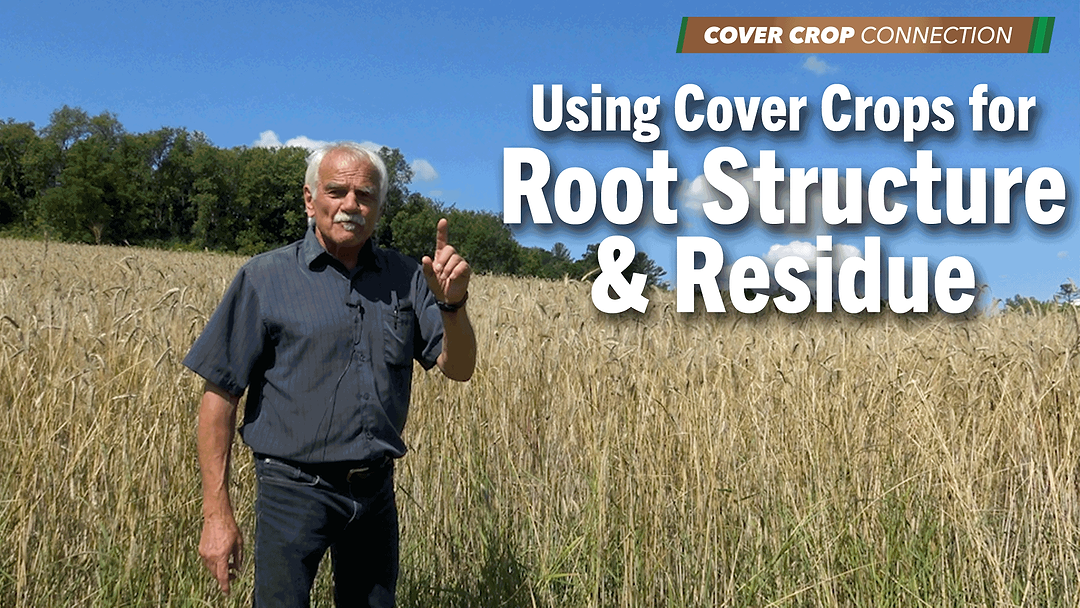Gary Zimmer, a grower in Spring Green, Wis., who some refer to as the “father of biological farming,” hosted a field day on his farm over the summer and explained why soil fertility has to involve the exchange of nutrients in a carbon biological cycle. According to Zimmer, too many farmers simply lay fertilizer on top of their land and fail to connect their nutrients to a carbon source. Here is Gary talking about his unique approach to cover crops and how they help with soil fertility on his farm.
“We used to do a blend, a four way blend. I had red clover, white clover, crimson clover, and alfalfa. The crimson clover never did really well. Red clover dominates. And now this year we took the alfalfa out because that didn't compete very well. We put sweet clover in. Now the sweet clover is the problem. I want a big taproot.
I want a rhizome root, so I got different root systems, so I sell three different clovers, because I got different rooting systems. And the sweet clover really, really took off, and I'm a little nervous about that baby, because that, but that's going to have a big taproot system, because we, we do run shallow incorporating residues, but if it's a wet, muddy year, we also got inline rippers.
We got a ripper that just cuts slats in the ground and picks the soil back up if we compact it. Now we try to stay everything on, uh, 12 row equipment. So everything is all wheel track, all 30 feet wide, whatever, except the combines are not. And so, but, and the tillage tools, when we get done with this, and the, this will just be, this will now, after it's combined, we'll just leave it until about the end of August, and then it'll get flail mowed down.
Everything stays. And then another crop will grow. Now some years we didn't flail mow it, we just let it grow. And the clover got this big and then it killed itself. So now we flail mow it, so we get the clover that's here now, and some years it's going to be like this. Most years. This year it's going to be [01:07:00] moist, this year it's not.
And so then we get that growth. Plus the rye straw, and then we get the growth that takes place by the end of August. There'll be another crop this tall, and then come winter, it'll be this tall going into winter, and then next spring when it gets this tall, we'll take it down. So we don't plant mammoth red clover, we plant freedom and high expensive four cut red clovers.
We want four cuttings out of that red clover in that one year. And then you can't do that with mammoth, it's a two cut system. And so we got freedom and other better genetics.”
If you want to hear more about Gary Zimmer’s operation and some of his unique cover crop methods, be sure to check out the latest episode of the Cover Crop Strategies Podcast at covercropstrategies.com.






Post a comment
Report Abusive Comment